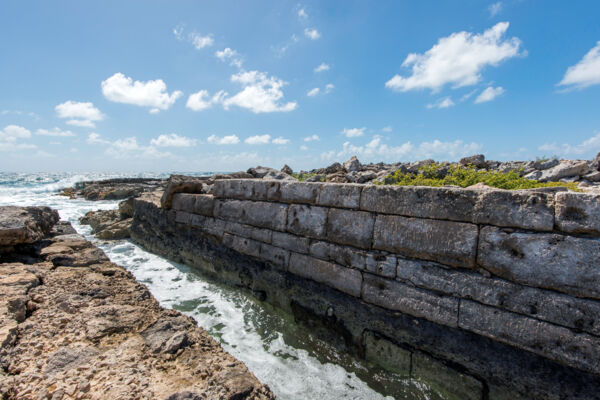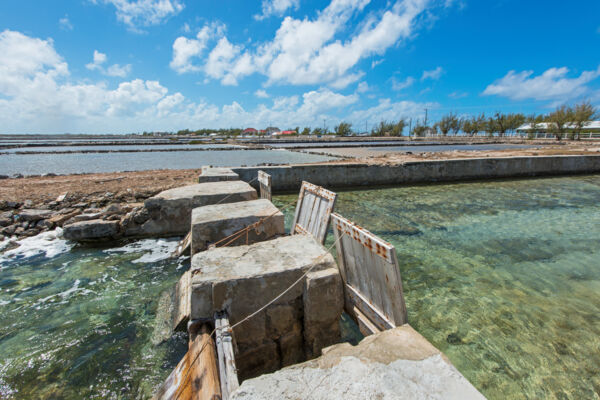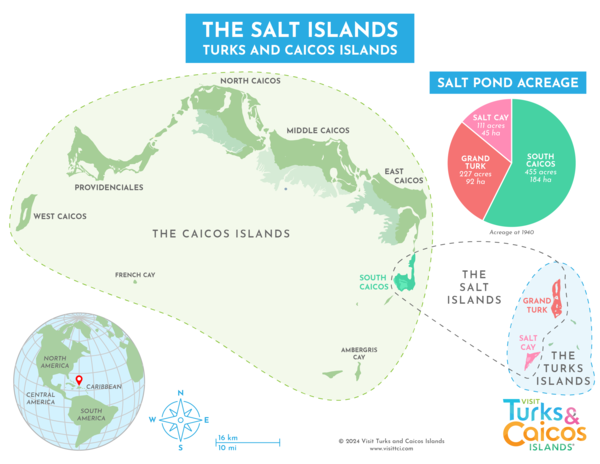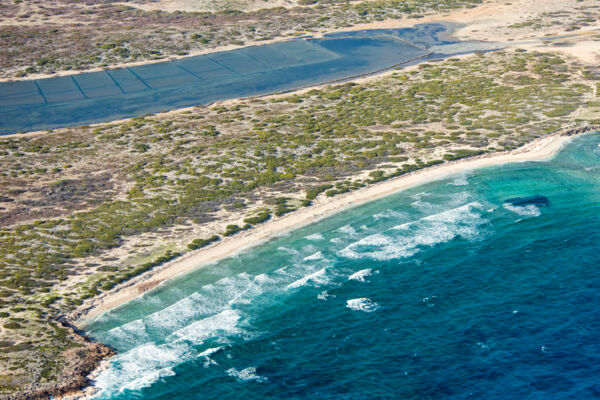Salt Cay Salinas
Salt Cay
Although it’s uncertain exactly when serious salt production started on Salt Cay, around the early 1700s British colonials from Bermuda recognized the potential of the natural and shallow salt ponds in the Turks and Caicos. Salt was a valuable commodity at the time and what initially began as a solution for regional needs became a lucrative international business.
Three islands in the Turks and Caicos saw salt production: Grand Turk, South Caicos, and Salt Cay. It’s believed that Salt Cay was the first to see organized production.
The process of producing salt was straightforward. A connection, either by a small channel to the ocean or by a natural tidal underwater cave system, supplied salty ocean water to be naturally evaporated. The remaining salt would be gathered and exported.

The sophistication of production improved as the decades went by. By the time the salt industry was in full swing, an efficient multiple-pond process was common. As the water evaporated and the salinity gradually increased, the brine would be transferred into progressively smaller ponds (separated by low stone walls) until crystallization occurred. Gates, and simple windmills or human-powered pumps, facilitated water movement between these different stages.
This partitioned system allowed for smaller final stages of ponds that produced a steady supply of salt, were easier to maintain, and reduced the chance of major loss caused by a failure in the gates or walls.
Due to the smaller salina area on the tiny island, Salt Cay’s outputs during the height of the production years (early 1900s) did not quite reach that of Grand Turk and South Caicos.
During this period about 111 acres (45 hectares) of salina were being used, which was more or less all available ponds on the island.

Decline

Due to the inefficiencies of the small scale of production in the Turks and Caicos Islands, the industry was doomed to failure. It was simply not financially worthwhile to build and maintain deep water ports and modern equipment to work the limited amount of salinas in the country. Output had all but ceased by 1960.
What Can Be Seen Today
Salt Cay probably has the best-preserved salt industry remains today in the Turks and Caicos, as the island has seen very little development since salt production stopped. As the salinas sit unused, visitors are free to explore.
Every pond on the island has the low stone walls that divided up the salinas. The inlets that connected the salinas to the ocean can still be seen. The large inlet near Deane's Dock is the most impressive, but the one that fed the Grey Salina on the northeast end of the cay has beautifully cut stone masonry.
The Harriott White House in Balfour Town is the most impressive of the salt-era buildings. The lower level of this structure was used for equipment storage and the upper level served as the residence for the Harriott Family, proprietors of a large portion of the island’s salinas.
